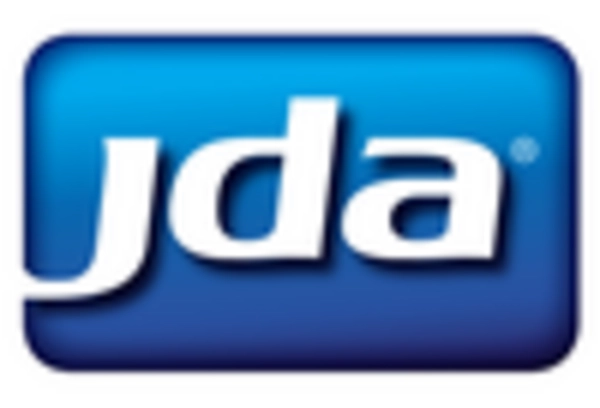E-commerce Growth and Demand
The freight management-system market in South America is significantly influenced by the exponential growth of e-commerce. As online shopping continues to gain traction, the demand for efficient freight management solutions is escalating. In 2025, e-commerce sales in the region are projected to reach approximately $100 billion, necessitating robust logistics frameworks. This growth compels businesses to adopt advanced freight management systems to handle increased shipment volumes and ensure timely deliveries. Consequently, the freight management-system market is poised for expansion as companies seek to enhance their logistics capabilities to meet consumer expectations.
Increased Focus on Customer Experience
The freight management-system market in South America is increasingly driven by a heightened focus on customer experience. As competition intensifies, logistics providers are recognizing the importance of delivering superior service to retain clients. In 2025, it is anticipated that companies will invest around $5 billion in technologies aimed at improving customer interactions and satisfaction. This includes implementing freight management systems that offer real-time tracking, transparent communication, and personalized services. By prioritizing customer experience, businesses can differentiate themselves in the market, thereby fostering loyalty and driving growth in the freight management-system sector.
Infrastructure Development Initiatives
Infrastructure development initiatives across South America are playing a pivotal role in shaping the freight management-system market. Governments are investing heavily in transportation networks, including roads, railways, and ports, to facilitate smoother logistics operations. For instance, the Brazilian government has allocated over $10 billion for infrastructure improvements in 2025. Enhanced infrastructure not only reduces transit times but also lowers transportation costs, thereby driving the demand for sophisticated freight management systems. As these initiatives progress, the freight management-system market is likely to benefit from increased efficiency and reduced operational challenges.
Rising Fuel Costs and Efficiency Needs
The freight management-system market in South America is also impacted by rising fuel costs, which compel logistics companies to seek more efficient solutions. Fluctuations in fuel prices can significantly affect transportation expenses, prompting businesses to optimize their operations. In 2025, fuel costs are expected to rise by approximately 15%, leading companies to invest in freight management systems that enhance route planning and load optimization. By improving fuel efficiency, these systems can help mitigate rising costs, making them an essential component of logistics strategies in the region.
Technological Advancements in Logistics
The freight management-system market in South America is experiencing a surge due to rapid technological advancements in logistics. Innovations such as artificial intelligence (AI), machine learning, and the Internet of Things (IoT) are enhancing operational efficiency. These technologies enable real-time tracking and data analytics, which are crucial for optimizing supply chain processes. In 2025, it is estimated that the adoption of AI in logistics could increase operational efficiency by up to 30%. This shift towards automation and data-driven decision-making is likely to reshape the freight management-system market, making it more competitive and responsive to customer needs.


















Leave a Comment